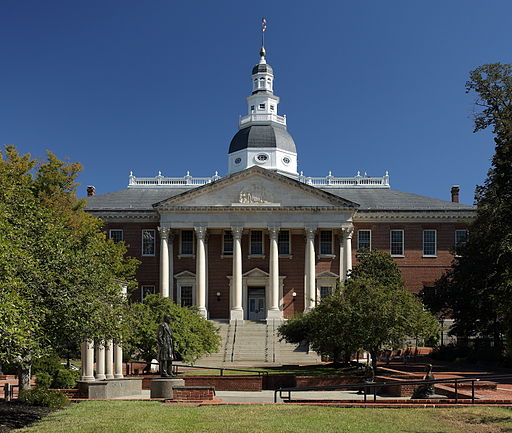Maryland enacted new congressional district map on Dec. 9 after both chambers of the Democratic-controlled state legislature overrode Gov. Larry Hogan’s (R) veto of the plan. The vote to override Hogan’s veto was 96-41 in the House of Delegates and 32-14 in the state Senate. Maryland was apportioned eight seats in the U.S. House of Representatives after the 2020 census, the same number it received after the 2010 census. This map will take effect for Maryland’s 2022 congressional elections. Maryland was the 19th state to enact congressional district plans after the 2020 census.
The House of Delegates passed the redistricting plan on Dec. 7, 97-42, with all ‘yes’ votes coming from Democrats and 41 Republicans and 1 Democrat voting ‘no.’ The State Senate approved the congressional map, 32-15, on Dec. 8 in a party-line vote. The Maryland Legislative Redistricting Advisory Commission had released a final draft congressional redistricting proposal on Nov. 23.
According to David Collins of WBAL-TV, “The map allows Democrats to hold seven of the state’s eight congressional seats and the First District on the Eastern Shore, held by Republican Rep. Andy Harris, becomes more competitive.” Legislators approved the congressional district plan developed by the Legislative Redistricting Advisory Commission and rejected a map proposal developed by the Maryland Citizens Redistricting Commission, a citizen commission formed by Gov. Hogan.
After vetoing the legislatively approved map, Hogan tweeted, “The gerrymandered map passed by the legislature is an egregious violation of the civil rights of the people of Maryland. Today, we’re calling on the Biden administration to immediately add the state of Maryland into their lawsuit.” After approving the maps, Senate Majority Leader Nancy King (D) said, “Maryland’s geography is unique, and our population is varied. Taking all that into consideration, I am confident that this map is a fair one, and one that reflects the lived experience of Marylanders.”
As of Dec. 9, 19 states have adopted new congressional maps, one state’s legislature has approved congressional district maps that have not yet taken effect, six states were apportioned one congressional district (so no congressional redistricting is required), and 24 states have not yet adopted new congressional maps. As of Dec. 9 in 2011, 27 states had enacted congressional redistricting plans.
States have completed congressional redistricting for 165 of the 435 seats (37.9%) in the U.S. House of Representatives.
Additional reading:


